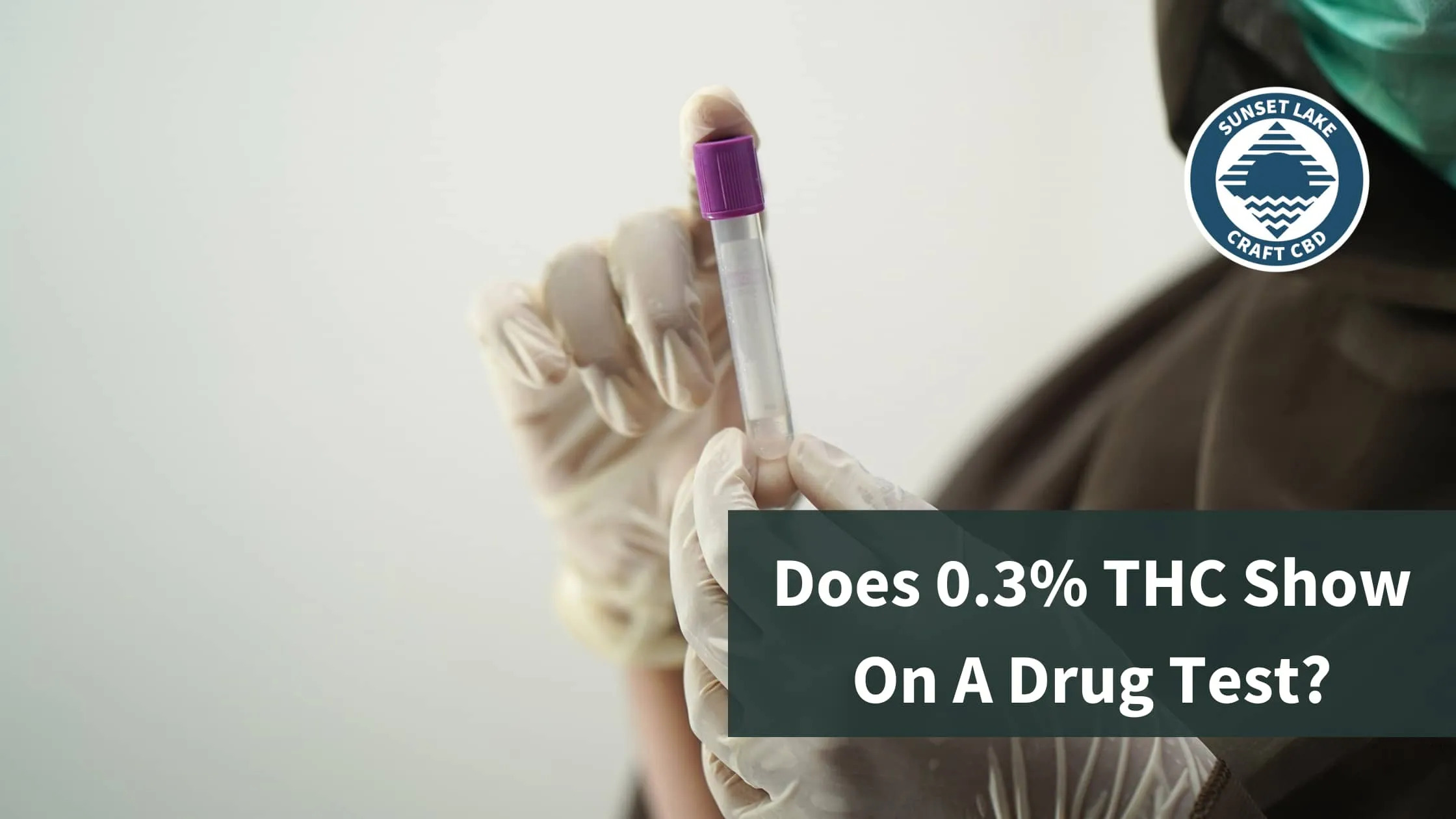No products in the cart.
Will 0.3% THC Show Up On A Drug Test?

Key Takeaways
- Any level of THC is liable to show up on a drug test.
- Urine tests are the most common type of drug tests used by workplaces.
- For the average user, THC is detectable by urine tests for up to 14 days after last use.
Despite the wide use of full-spectrum CBD products, a lot of confusion about drug testing remains. A heavily-searched question online asks, “Will 0.3% THC show up on a drug test?”
It’s an important question, especially for folks seeking to use CBD to help get to sleep or ease chronic pain. We’ve already covered this topic more broadly in our post, “Will CBD Show Up On A Drug Test,” but in this post, we’ll drill down into full-spectrum CBD, the legal THC limits, and answer some specific drug testing questions.
Disclaimer: This post is purely informational and should not be considered medical or legal advice.
THC And Positive Drug Test Results
The cannabidiol (CBD) molecule won’t show up on your drug tests. However, because most CBD products are either classified as or contain full-spectrum extract, they contain trace amounts (0.3% by dry weight) of THC. Said trace amounts of THC can show up on drug tests depending on the amount a person consumes and a few other factors that we’ll explore in the next section.
This goes for hemp-derived THC, too. It doesn’t matter if the THC is derived from cannabis or hemp plants; it’s processed by your body the same way.
Broad-spectrum CBD and products made with CBD isolate shouldn’t contain any THC, as it’s specifically removed during the distillation process. You will want to double-check your product’s certificate of analysis. If you’re worried about any future drug tests, make sure that your product contains “ND” non-detectable levels of THC and its precursor molecule THCa.
How Much THC Will Make Me Fail A Drug Test?
It’s hard to say how much THC needs to be present in your system to cause a positive drug test because it depends on several unique variables and the cutoff value of the test itself.
Drug tests work by screening for one of THC’s primary metabolites, Carboxy-Tetrahydrocannabinol (THC-COOH), or a piece of what’s left after your body processes THC.
Back in 2017, federal workplace drug testing thresholds were established to address the possibility of trace amounts of THC-COOH triggering a positive test. In other words, passing a drug test doesn’t mean that there isn’t any THC-COOH in your system. It means that the amount of THC-COOH in your system is so low as to not register above the threshold level.
How Fast Does The Body Process THC?
The following affect the amount of time that THC and its metabolite, THC-COOH, remain detectable in urine and other biological samples:
- Frequency of THC use
- Presence of interacting medications
- The dose and ingestion method
- When your last dose was
Different THC Testing Thresholds
As mentioned in a previous section, whether or not you test positive for THC will depend on the type of test that you take, too. Different testing methods have different thresholds.
Urine Testing
Drug testing, more often than not, is done via urine tests. In urine testing, the THC-COOH threshold is 50 nanograms per mL. (One nanogram equals one billionth of a gram.)
THC-COOH is generally detectable in urine for approximately 3 to 14 days after use. In heavier cannabis and THC users, THC-COOH may be present in urine for 30 days or longer.
Saliva Testing
Saliva testing is less common than urine testing as there are no established thresholds for THC-COOH in saliva.
That and THC metabolites are detectable in saliva for around 72 hours— longer in heavier cannabis users.
Hair Follicle Testing
Private industries do utilize hair testing to an extent. The most common threshold used in hair testing is around one picogram of THC-COOH per milligram of hair. (A picogram is one trillionth of a gram.)
THC metabolites are detectable in hair for up to 90 days.
Other Things to Know About Workplace Drug Testing
Companies can conduct drug tests on various biological samples, like urine, hair, blood, saliva, sweat, nails, and stool. Urine testing is the most common method of workplace testing because it’s less evasive and relatively easy to collect. Metabolite concentration is usually higher in urine and excrement than in blood and is also present longer.
There are also two types of urine drug tests,
- Screening – These tests are usually conducted on-site and provide an initial pass/fail for the presence of substances. If you pass a screening test, you likely won’t have to take a confirmatory test.
- Confirmatory – These tests use mass spectrometry to identify the quantity of substance in a sample. They are more accurate than screening tests but more costly. These types of tests recognize specific cannabinoids rather than their metabolites so they can distinguish CBD from THC.
